Lahandi Baskoro's Blog, page 13
June 23, 2020
Advantages and disadvantages of biomass boilers
1. Biomass resources are renewable resources. The energy of biomass boilers belongs to biomass particles, which are all derived from organic matter, animal waste, and plants. These substances are sources of life and are renewable resources that can be supplied with sufficient energy.
2. Energy saving and environmental protection, more environmentally friendly than petrochemical fuel. Biomass boilers hardly produce polluting exhaust gas when they are used. Although they can produce carbon dioxide, natural circulation will not promote carbon dioxide to grow too much. The large amounts of carbon dioxide and nitrogen oxides released into the atmosphere when fossil fuels are burned are harmful to the environment. Many energy fuels produce harmful gases when they are burned, but only by controlling the emissions of greenhouse gases and harmful substances can the environment be more comfortable.
3. Reduce dependence on fossil fuels. Due to the reproducibility and environmental performance of biomass fuel, the use of biomass fuel can reduce the degree of dependence on fossil fuels in life.
4. Easy to obtain. Biomass is our daily easy-to-access and relatively cheap energy source. Bio-stalks and plant remains are long-term and sustainable energy sources.
5. Reduce the cost of landfill and disposal. By burning biomass, we can turn environmental pollution and harmful things into useful things. In the United Kingdom, more than six million tons of wood are treated as garbage every year and landfilled in landfills. If these woods can be processed into biomass fuel, it can meet the needs of most boiler heating and heating homes and projects.
6. Renewable thermal excitation. By installing biomass boilers, you can get regeneration heat incentives, which is a government-supported financial incentive to promote the use of renewable heat for domestic and commercial markets. Domestic renewable heat incentives are designed to promote the absorption of renewable heating technologies to reduce carbon in households in the UK, helping to achieve renewable energy goals and save costs.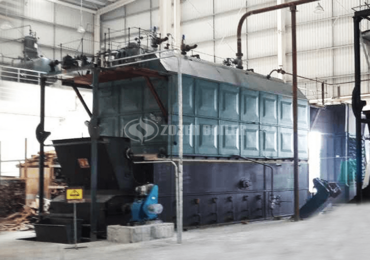
Disadvantages of biomass boilers
1. Cost. The initial construction cost of biomass boilers is more expensive than fossil fuel boilers, and the operating costs are slightly more expensive than coal-fired boilers.
2. Space. Biomass particles are larger than oil and natural gas, and require a separate storage area, so a larger fuel storage space is required. However, combined analysis, the most ideal boiler currently used is still a better biomass boiler.
June 19, 2020
How to maintain gas boiler accessories
Safety valve
The safety valve can ensure that the boiler operates within the specified pressure range. If the pressure in the boiler exceeds the standard, the safety valve will issue an alarm to remind the operator to take corresponding measures; another function is to reduce and reduce the pressure of the boiler to ensure the normal operation of the boiler. The abnormality of the safety valve is generally caused by leakage or foreign objects inside, which can cause leakage and other conditions. The safety valve can usually be adjusted and inspected to ensure the normal operation of the safety valve.
Pressure gauge
The pressure gauge reflects the magnitude of the steam pressure of the steam boiler. The operator can adjust the boiler pressure according to the value of the pressure gauge to ensure that the boiler operates within the specified working pressure range. The pressure gauge must be protected against freezing and high temperature during use, and must not be suddenly impacted to ensure the normal operation of the pressure gauge.
Water level gauge
You can check the height of the water surface inside the steam boiler through the water level gauge. The furnace worker can monitor the boiler water level by observing the water level gauge to avoid abnormal occurrence of excessive or lack of water in the boiler and ensure the safe operation of the boiler.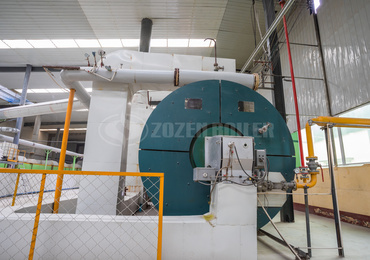
High and low water level alarm
If the boiler water level is lower than or exceeds the limit water level, the high and low water level alarm can issue an alarm to remind the operator to deal with it. The water level alarm needs to be kept in a clean state and has a good sealing effect. If it is not qualified, it will not function as a normal water level reminder.
June 11, 2020
Gas boiler reconstruction plan
The gas boiler belongs to ultra-low nitrogen emission. The detailed transformation plan:
1. Replace the burner
Replace the ordinary burner with an ultra-low nitrogen burner to optimize the combustion environment of the fuel, thereby reducing the content of nitrogen oxides
2. Renovate the flue gas recycling
Open the flue at the tail of the existing gas boiler, reconnect a flue, and pass the flue gas into the burner to burn
Note: The opening position of the gas boiler tail needs to be analyzed and measured with professional instruments to select the best opening position
The nitrogen oxide content of the reformed gas boiler is less than 80mg/m³
This type of low-nitrogen gas boiler transformation only needs to replace the low-nitrogen burner
The bladder size and boiler length of the low-nitrogen gas boiler of the above two emission standards must meet the low-nitrogen requirements. If the size does not meet the requirements, it is not recommended to modify the low-nitrogen gas boiler. The main reasons are as follows:
1. The effect of the transformed boiler cannot be guaranteed
2. Thermal efficiency cannot be guaranteed
June 5, 2020
Gas heat conduction oil stove to prevent accidents
As a common heating equipment in daily life, gas heat conduction oil stove is used very frequently, so if an accident occurs, then the impact of the consequences will be very large. How to prevent accidents,ZOZEN boiler to tell everyone.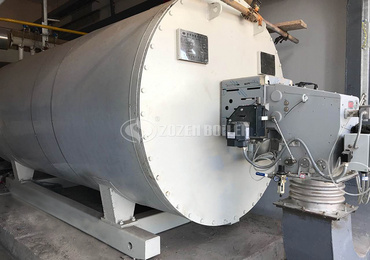
When operating a gas-fired heat-conducting oil furnace, regularly check whether the water level is normal, boiler accessories such as water level gauges, pressure gauges, and safety valves to ensure the normality of the accessories; to avoid boiler fire accidents, start the blower fan before the boiler ignites After 10 minutes of ventilation, the automatic maintenance devices in the boiler are generally installed, such as: automatic ignition, flameout maintenance, etc.; for the inside of the boiler, the relevant staff should also conduct regular inspections to ensure that there is no gas leakage.
June 2, 2020
How safe is the thermal oil furnace
Heat-conducting oil furnaces use natural gas, coke oven gas, city gas, light oil, heavy oil, palm oil, etc. as fuel, with a boiler efficiency of up to 94%. It can be divided into three categories: fuel gas heat conduction oil furnace, coal-fired heat conduction oil furnace, and biomass heat conduction oil furnace. They are commonly used in textile, food, rubber, chemical, pharmaceutical, enterprise, government, hotel, school and other industries.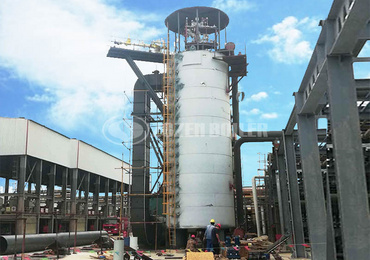
The industry of heat conduction oil furnace application touches all walks of life. They are all important production and living departments in my country, and have extremely high requirements for the safety of heat conduction oil furnace. So, what is the safety of the thermal oil furnace?
The heat conduction oil furnace adopts advanced control system, which can control the boiler medium with high precision. On the basis of guaranteeing the thermal efficiency of the boiler, it will provide another insurance for its safety.
Of course, the boiler users also need to be cautious when running the heat conduction oil furnace, keeping the heat conduction oil furnace safety knowledge in mind, to prevent power failure and stop the pump, to avoid heat conduction oil overheating, coking or carbon deposits, filters and other matters to be cleaned regularly.
May 28, 2020
Heat conduction oil furnace in various industries
In the use industry, the heat conduction oil furnace is mainly used for heating crude oil and natural gas and processing, storage and transportation of mineral oil. Refineries use heat-conducting oil to preheat cold materials, and have been successfully used in the heating of solvent and extractant evaporation devices in the manufacture of lubricants. Compared with the use of steam heating, the use of heat conduction oil heating has the advantages of uniform heating, simple operation, safety and environmental protection, energy saving, high temperature control accuracy, and low operating pressure. It has been widely used as a heat transfer medium in modern industrial production. application.
In the chemical industry, it is mainly used for the heating of synthetic devices such as distillation, evaporation, polymerization, condensation / de-emulsification, lipidation, drying, melting, dehydrogenation, forced heat preservation, and pesticides, intermediates, antioxidants, surfactants, perfumes, etc. .
In the oil and fat industry, heat-conducting oil furnaces are mainly used for heating devices such as oil and fat decomposition, fatty acid distillation, lipidation, nitrification, hydrogenation, concentration, and vacuum deodorization.
In the synthetic fiber industry, the thermal oil furnace is mainly used for heating of polymerization, melting, spinning, thermosetting, fiber finishing, stretching and drying equipment.
In the paper industry, it is mainly used for heating glue coating rollers, drying rollers, drying rooms, drying cabinets, hot melt machines, wax pots and corrugated paper processing.
In the plastic and rubber industry, it is mainly used for heating and heat preservation of hot pressing, hot rolling, extrusion, kneading, mixing, vulcanization molding, injection molding machine, glue mixer, conveyor dryer, screw extruder and mold .
In the air conditioning and electrical equipment industry, it is mainly used for centralized or decentralized heating in factories, offices, hospitals, civil buildings, hotels; polishing machines, plate rolling machines, vacuum machines, dryers, drying rooms, vacuum Room heating.
In the fat and paint industry, it is mainly used for heating of autoclaves, dryers, distillation irrigation, evaporation equipment, paint drying, baking, drying and high temperature curing.
In the wood industry, it is mainly used for the thermocompression molding of fiberboard, particle board, laminate, plywood, and decorative panels, as well as the heating of wood drying equipment, drying equipment, coating equipment, and plywood.
In the building materials industry, it is mainly used for gypsum board drying, concrete component solidification protection and prefabricated production, ceramic tile stamping, decorative material drying and linoleum production line heat.
In road construction, it is mainly used for heating and dissolving of asphalt, asphalt storage tank, asphalt concrete and emulsified asphalt.
In the metallurgical, mechanical processing and foundry industries, thermal oil furnaces are mainly used for metal degreasing tanks, dewars, pickling tanks, cleaning tanks, electroplating tanks, Luyang plate oxidation tanks, electrode manufacturing, shower heat treatment devices, phosphates Treatment equipment, baking machine room, sand core drying, varnish spraying and drying, heating of assembly treatment device.
In the food industry, it is mainly used for the heating of bread baking devices, biscuit food baking devices, candy production devices, grain drying devices, edible oil extraction and refining devices, distillation pots, autoclaves, conveyor belt dryers .
In the textile printing and dyeing industry, it is mainly used for drying and setting devices, hot melt dyeing devices, dye printing devices, dryers, dryers, calenders, presses, washing machines, cloth presses, ironing machines, hot air drawing Width heating.
In the coking industry, it is mainly used for heating and heat preservation of gas storage tanks, mixing stations and distribution stations.
In the automobile manufacturing industry, it is mainly used for heating tunnel drying rooms, degreasing baths, and phosphoric acid treatment equipment.
In national defense scientific research, it is mainly used for high-temperature heat sources required for the development of new technologies, new materials, and new products for national defense research.
In the carbon industry, it is mainly used for graphite electrodes, carbon products, asphalt melting, kneading pot heating, extrusion molding heating.
In the marine industry, it is mainly used for heavy oil tanks, asphalt tanks, sulfur tanks on ships, and heat for containers that require heating and insulation.
In addition to the above-mentioned industries, heat-conducting oil furnaces can be used for heating water in warm water generators, hot water generators, steam generators, radiators, soap detergent industry, tar processing industry, washing machines.
What problems will exist in the use of thermal oil boiler
1: Heat-condensing oil is easily condensed by heat to make the boiler heat transfer area carbon coke
Thermal oil is prone to thermal cracking and polymerization chemical reaction after being heated at high temperature, which deteriorates the oil quality. For example, the gelatinization of the heat transfer oil is thick, the residual carbon and the acid value exceed the standard, and the coke crystal precipitation deposits, etc., resulting in the formation of coking oil carbon scale in the heat transfer area of the boiler.
2: Coking and scaling in the heat transfer area increases energy consumption and causes fire accidents
The accumulation of oil coke fouling on the heat transfer tube wall of the heat transfer oil boiler not only greatly reduces the heat transfer efficiency, increases the fuel cost, but also affects the downstream production process temperature. In severe cases, it causes local overheating of the heat transfer wall, cracks, corrosion, and tube explosion on the wall, causing leakage of heat transfer oil and causing major safety accidents such as fire and personal injury.
May 20, 2020
Industrial hydrothermal heater
Heat conduction oil furnace is also called heat conduction oil electric heating furnace. Using heat conduction oil as the medium, a heat pump is used to force the heat conduction oil to circulate in the liquid phase, and the heat is transferred to the heating equipment. The electrically heated heat conduction oil boiler has the characteristics of low pressure and high temperature. It is a new type of environmentally friendly industrial furnace.
The structural principle of the heat conduction oil furnace is to transfer the heated heat conduction oil to the heating equipment through a high temperature oil pump, after heat unloading, and then return to the heat conduction oil to electrically heat the heating tube, and use the high temperature oil pump to circulate the heat conduction oil to transfer the heat Give the heating equipment, and then pass through the circulation pump again, return to the heater, absorb the heat, and then transfer it to the heating equipment, so that the repeated circulation realizes the continuous transfer of heat, thereby controlling the temperature of the heating equipment.
Electric heating oil boilers have a wide range of applications and can be applied to:
1. Food and chemical industry: polymerization, condensation, distillation, melting, dehydration, forced heat preservation, etc.
2. Fats and oils industry: Fatty acid distillation, fat decomposition, concentration, esterification, vacuum odor and other reaction kettle temperature control, reaction kettle heating, etc.
3. Known in the synthetic fiber industry: polymerization, melting, spinning, stretching, drying, etc.
4. Textile printing and dyeing work: heat setting roller heating, drying room heating, heat capacity dyeing, etc .;
5. Rubber industry: hot pressing, calendering, extrusion, vulcanization molding, etc.
6. Timber industry: pressurized molding of plywood, fiberboard, heating of laminates, heating of hot pressing plates, temperature control of hydraulic press channels, wood drying, etc.
7. Building materials industry: gypsum board drying, asphalt heating, maintenance of concrete components, etc.
8. Machinery industry: painting, printing and drying.
May 15, 2020
pressure in thermic fluid heater
Thermal oil systems are superior to water boiling systems
A thermal oil boiler is nearly always cheaper to operate and maintain than water boilers. High pressures required to operate water and steam boilers makes them far more hazardous than thermal oil boilers. Other noticeable advantages with thermal oil systems are the lack of corrosion, lime deposits and scale that are common with heated water or steam boilers thus raising the operating costs of a water boiler considerably. Also, thermal oil boilers do not require makeup water or efficiency draining steam traps.
With thermal oil systems, the user is given the capability of high-temperature operation (up to 600F with organic thermal oils and 800F with certain synthetics) at quite low pressures. Due to the low operating pressure and properties of thermal fluids, most heaters are built to ASME Section VIII, Div. 1. A licensed boiler operator is not typically required.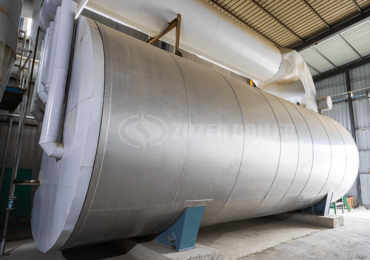
Thermal oil systems go by various names
Many people around the world refer to these systems by different names. Thermal oil heater, thermal oil system, thermal oil boiler, thermal fluid heater, thermal fluid system, thermal oil boiler, thermic fluid heater, hot oil heater, hot oil system, and hot oil boiler. All of them refer to the same type of closed loop liquid phase heat transfer system. And many people use the terms thermal oil boiler or thermal fluid boiler even though most systems do not involve any type of vaporization.
May 14, 2020
possible damage in thermal fluid heater
Normal System Operation
During the normal operation of a thermal oil system, the radiant and convective heat provided by the thermal fluid heater to the heater tubing positioned in the firebox is transferred to the film layer of the fluid through the tube wall. As the fluid is in a turbulent state, its film layer constantly mixes with the bulk of the fluid and swiftly transfers the heat. By means of the high flows provided by the circulating pump, the heat is quickly carried to the user by the fluid, which returns at a lesser temperature to carry more heat.
At normal working temperatures, the temperature of the refractory and structural metal parts of the heater may be equal to that of the flame itself. When the thermal oil system is shut down, it takes some time for the heat in these materials to entirely radiate and exit the stack. As certain heaters are equipped with more refractory parts than others, although the firebox temperature may be the same, it takes more time to radiate the additional stored heat.
If the fluid circulates even after the heater is shut down, it continuously carries these BTUs from the heater and distributes them to the entire system.
Improper Shutdown
On the contrary, if the entire thermal oil system is shut down instantaneously, the heater stops firing and the pump does not circulate the fluid. Consequently, heat stored in the refractory and structural metal parts of the heater is transferred to the firebox.
As the blower is turned off, this heat does not exit the stack immediately, resulting in the experiencing of intense heat by the heater tubing comprising the heat transfer fluid. As the fluid is stagnant, it cannot remove the heat and starts to boil once its skin temperature surpasses the recommended limit. The occurrence of this boiling can be clearly heard when listened carefully.
Lahandi Baskoro's Blog



